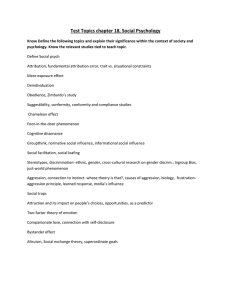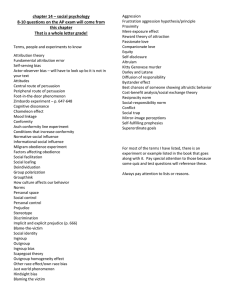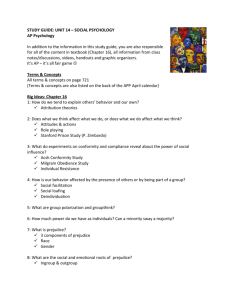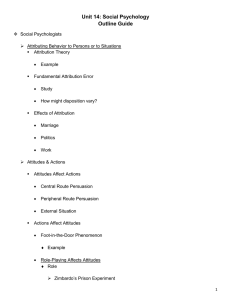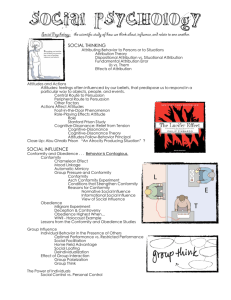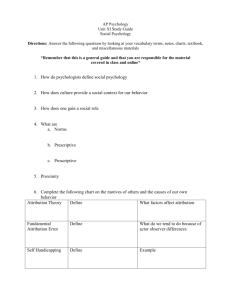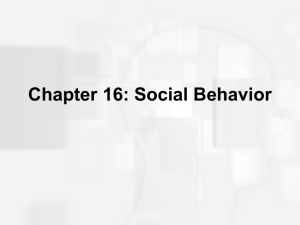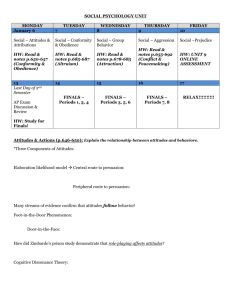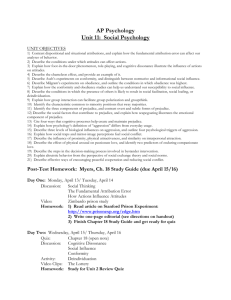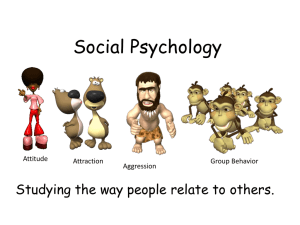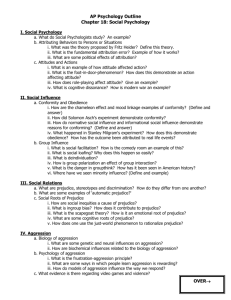AP Psychology Social Psych Spring 2014 Barron's Book Chapter 14
advertisement
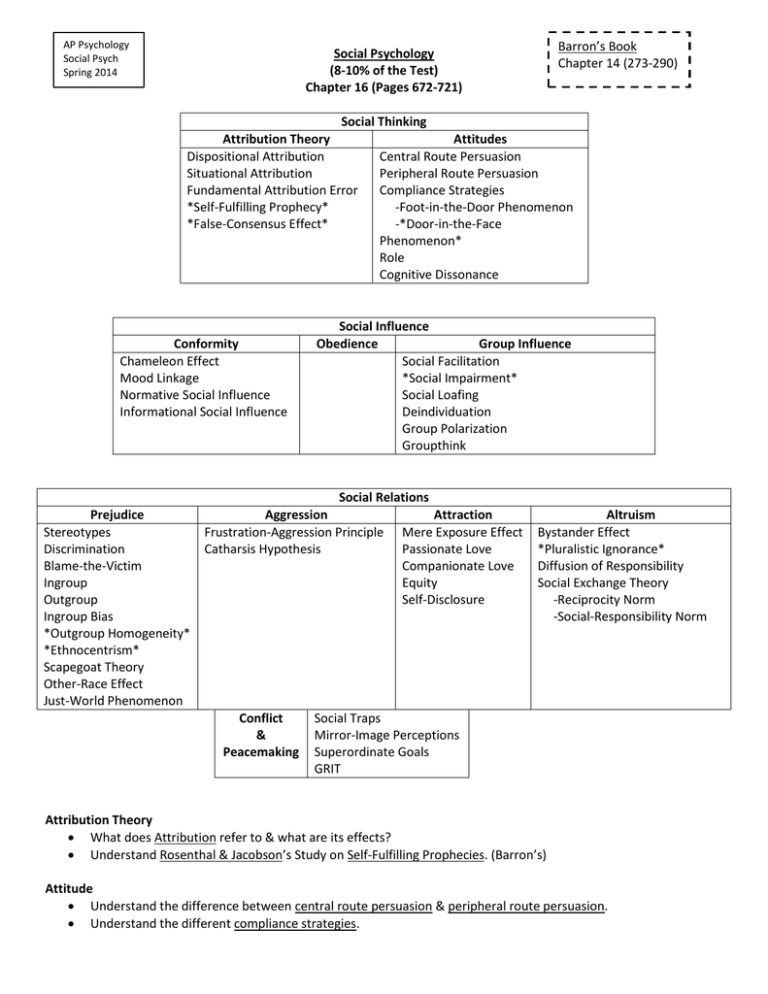
AP Psychology Social Psych Spring 2014 Barron’s Book Chapter 14 (273-290) Social Psychology (8-10% of the Test) Chapter 16 (Pages 672-721) Social Thinking Attribution Theory Attitudes Dispositional Attribution Central Route Persuasion Situational Attribution Peripheral Route Persuasion Fundamental Attribution Error Compliance Strategies *Self-Fulfilling Prophecy* -Foot-in-the-Door Phenomenon *False-Consensus Effect* -*Door-in-the-Face Phenomenon* Role Cognitive Dissonance Conformity Chameleon Effect Mood Linkage Normative Social Influence Informational Social Influence Prejudice Stereotypes Discrimination Blame-the-Victim Ingroup Outgroup Ingroup Bias *Outgroup Homogeneity* *Ethnocentrism* Scapegoat Theory Other-Race Effect Just-World Phenomenon Social Influence Obedience Group Influence Social Facilitation *Social Impairment* Social Loafing Deindividuation Group Polarization Groupthink Social Relations Aggression Attraction Frustration-Aggression Principle Mere Exposure Effect Catharsis Hypothesis Passionate Love Companionate Love Equity Self-Disclosure Conflict & Peacemaking Altruism Bystander Effect *Pluralistic Ignorance* Diffusion of Responsibility Social Exchange Theory -Reciprocity Norm -Social-Responsibility Norm Social Traps Mirror-Image Perceptions Superordinate Goals GRIT Attribution Theory What does Attribution refer to & what are its effects? Understand Rosenthal & Jacobson’s Study on Self-Fulfilling Prophecies. (Barron’s) Attitude Understand the difference between central route persuasion & peripheral route persuasion. Understand the different compliance strategies. How does Role-Playing affect attitudes? Be able to describe Philip Zimbardo’s Stanford Prison Experiment. Understand Leon Festinger’s Hypothesis about Cognitive Dissonance. Conformity How much is our behavior affected by the behavior of others? Understand Solomon Asch’s study on conformity & its results. What conditions strengthen conformity? Understand the difference between normative social influence & informational social influence. Obedience Understand Stanley Milgram’s experiment & its results. What factors did Milgram find that affected the rate of obedience? What lessons can be taken from studies on conformity & obedience? Group Influence How does the presence of others influence us (Social Facilitation, Social Loafing, & Deindividuation)? Know the difference between Social Facilitation & Social Impairment (Barron’s). Understand group dynamics (Group Polarization & Groupthink) Understand the difference between Social Control & Personal Control. Prejudice Know the difference between Prejudice, Stereotypes, & Discrimination. Understand examples of both Overt Prejudice & Subtle Prejudice in our society. What implicit racial prejudices exist in our society? Understand how Social Inequalities lead to prejudice. Understand how the formation of Ingroups and Outgroups lead to the formation of prejudice. Understand Outgroup Homogeneity (Barron’s). Why do people scapegoat? How do Categorization, Vivid Cases, & The Just-World Phenomenon contribution to the formation of prejudice. Aggression Understand the Genetic Influences, Neural Influences, & Biochemical Influences on Aggression. What Social & Cultural factors contribute to Aggression. What effect does Aggressive Modeling have on us? Do Video Games encourage aggression? What is the Catharsis Hypothesis & is it true? Attraction Understand the conclusions of research on attractiveness. What is the difference between Passionate Love & Companionate Love? Altruism What was shown by John Darley & Bibb Latane’s research into Bystander Intenvention? Why do we help other people? Conflict & Peacemaking What factors increase conflict? What factors encourage peace-making & Cooperation?
